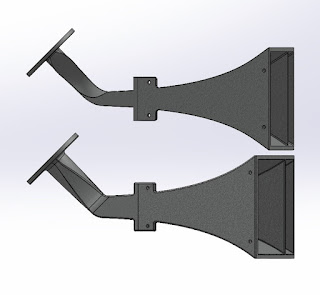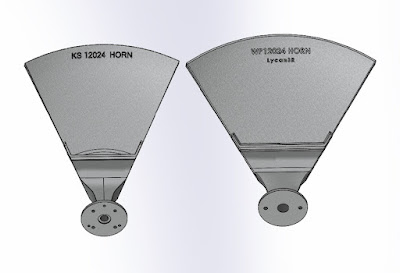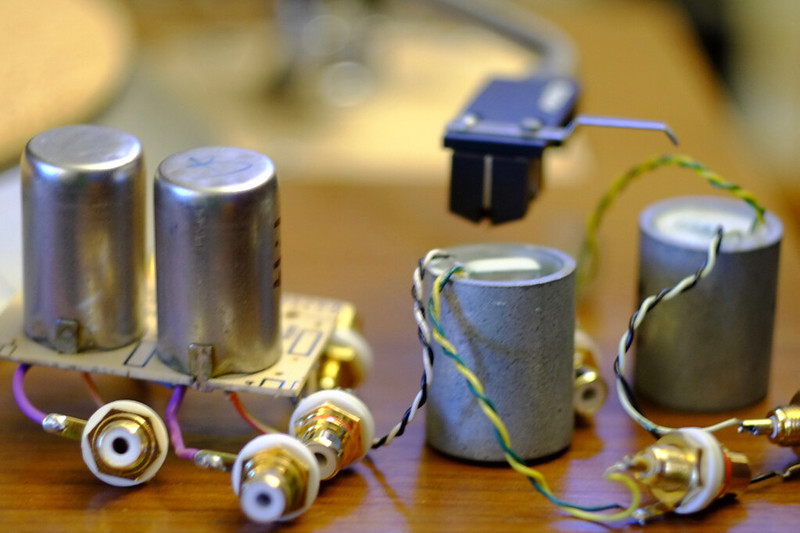In late September, I received a message from Trieu of Lycan R&R, asking if I'd be interested in evaluating his 3D-printed prototype pair of multi-cell horns.
Before proceeding further, this blog entry contains a lot of hyperlinked texts to either previous entries or other sites pertinent to the article (e.g. "Lycan R&R" above). Mousing over and clicking those texts will open the link on another page. Thanks!
Design notes from Trieu: "These horns are slightly wider. The original KS12024 has a rather narrow 50° horizontal dispersion. When updated to the 1" driver opening, the wider initial diameter of the of the 1" driver would not allow for the throat geometries to work correctly. I felt the slim vertical profile of the original KS12024 is important sonically.
The best way to maintain it is to increase the horizontal width via a wider angle. So I increased the horizontal dispersion to 62.5° allowing for the proper expansion and geometries of the throat piece. BTW, I used carbon fiber infused PLA filaments."



































